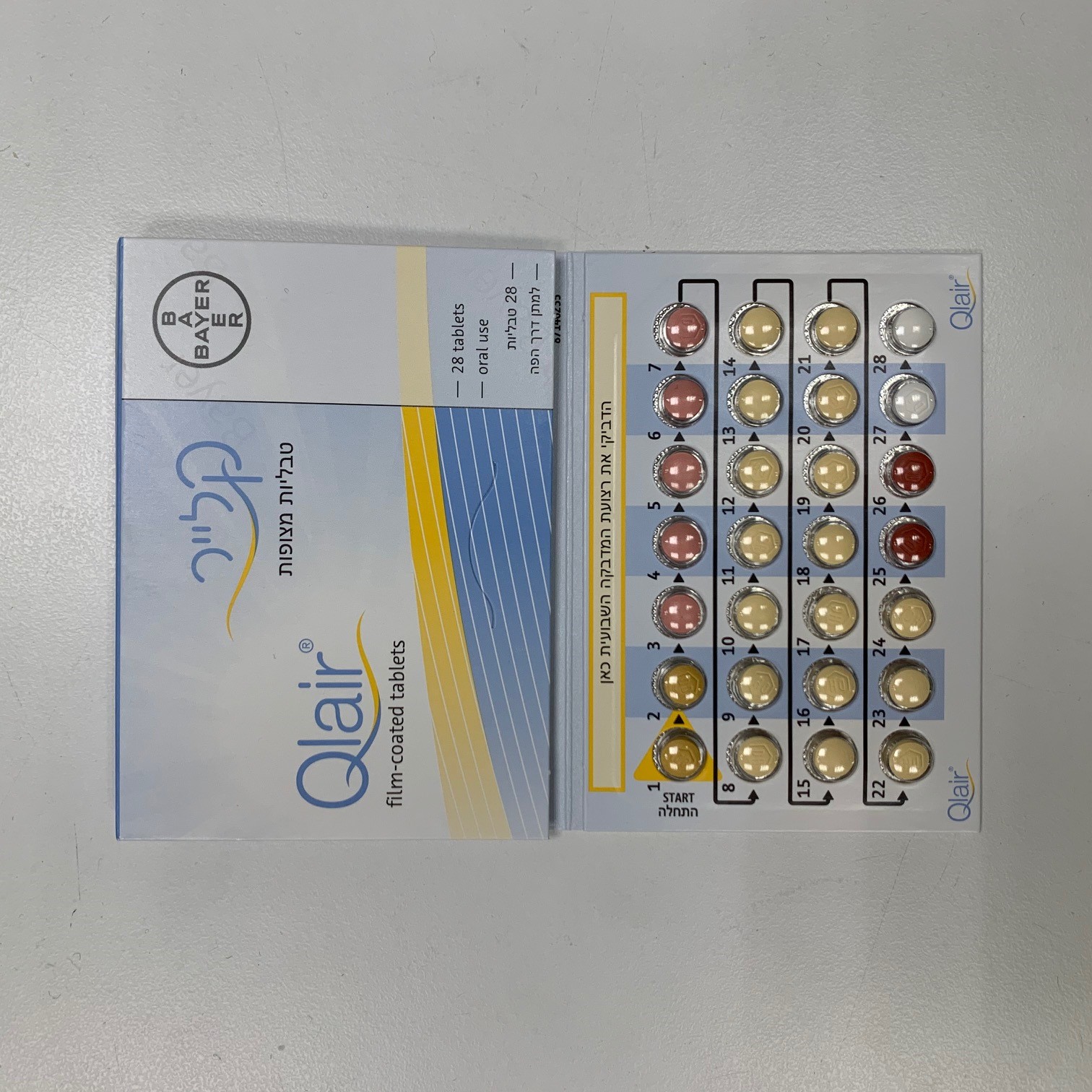Quest for the right Drug

קלייר QLAIR (DIENOGEST, ESTRADIOL VALERATE)
תרופה במרשם
תרופה בסל
נרקוטיקה
ציטוטוקסיקה
צורת מתן:
פומי : PER OS
צורת מינון:
טבליות מצופות פילם : FILM COATED TABLETS
עלון לרופא
מינוניםPosology התוויות
Indications תופעות לוואי
Adverse reactions התוויות נגד
Contraindications אינטראקציות
Interactions מינון יתר
Overdose הריון/הנקה
Pregnancy & Lactation אוכלוסיות מיוחדות
Special populations תכונות פרמקולוגיות
Pharmacological properties מידע רוקחי
Pharmaceutical particulars אזהרת שימוש
Special Warning עלון לרופא
Physicians Leaflet
Interactions : אינטראקציות
4.5 Interaction with other medicinal products and other forms of interaction Note: The prescribing information of concomitant medications should be consulted to identify potential interactions. Interaction studies have only been performed in adults. The following interactions have been reported in the literature for COCs in general or were studied in clinical trials with Qlair. • Effects of other medicinal products on Qlair Interactions can occur with drugs that induce microsomal enzymes which can result in increased clearance of sex hormones and which may lead to breakthrough bleeding and/or contraceptive failure. Management Enzyme induction can already be observed after a few days of treatment. Maximal enzyme induction is generally seen within a few weeks. After the cessation of drug therapy enzyme induction may be sustained for about 4 weeks. Short-term treatment Women on treatment with enzyme-inducing drugs should temporarily use a barrier method or another method of contraception in addition to the COC. The barrier method must be used during the whole time of the concomitant drug therapy and for 28 days after its discontinuation. If the drug therapy runs beyond the end of the active tablets in the COC pack, the placebo tablets must be discarded and the next COC pack should be started right away. Long-term treatment In women on long-term treatment with hepatic enzyme-inducing active substances, another reliable, non-hormonal, method of contraception is recommended. Substances increasing the clearance of COCs (diminished efficacy of COCs by enzyme- induction), e.g.: Barbiturates, carbamazepine, phenytoin, primidone, rifampicin, and HIV medication ritonavir, nevirapine and efavirenz and possibly also felbamate, griseofulvin, oxcarbazepine, topiramate and products containing the herbal remedy St. John's Wort (hypericum perforatum). In a clinical study the strong cytochrome P450 (CYP) 3A4 inducer rifampicin led to significant decreases in steady state concentrations and systemic exposures of dienogest and estradiol. The AUC (0-24h) of dienogest and estradiol at steady state, were decreased by 83% and 44%, respectively. Substances with variable effects on the clearance of COC: When co-administered with COCs, many combinations of HIV protease inhibitors and non-nucleoside reverse transcriptase inhibitors, including combinations with HCV inhibitors can increase or decrease plasma concentrations of estrogen or progestins. The net effect of these changes may be clinically relevant in some cases. Therefore, the prescribing information of concomitant HIV/HCV medications should be consulted to identify potential interactions and any related recommendations. In case of any doubt, an additional barrier contraceptive method should be used by women on protease inhibitor or non-nucleoside reverse transcriptase inhibitor therapy. Substances decreasing the clearance of COCs (enzyme inhibitors): Dienogest is a substrate of CYP3A4. The clinical relevance of potential interactions with enzyme inhibitors remains unknown. Concomitant administration of strong CYP3A4 inhibitors can increase plasma concentrations of the estrogen or the progestin or both. Coadministration with the strong CYP3A4 enzyme inhibitor ketoconazole resulted in a 2.9-fold and 1.6-fold increase of AUC (0-24h) at steady state for dienogest and estradiol, respectively. Concomitant administration of the moderate inhibitor erythromycin increased the AUC (0-24h) of dienogest and estradiol at steady state by 1.6-fold and 1.3-fold, respectively. • Effects of Qlair on other medicinal products Oral contraceptives may affect the metabolism of certain other active substances. Accordingly, plasma and tissue concentrations may either increase (e.g. cyclosporin) or decrease (e.g. lamotrigine). Pharmacokinetics of nifedipine were not affected by concomitant administration of 2 mg dienogest + 0.03 mg ethinyl estradiol thus confirming results of in vitro studies indicating that inhibition of CYP enzymes by Qlair is unlikely at the therapeutic dose. Other interactions During clinical trials with the HCV combination drug regimen ombitasvir/paritaprevir/ritonavir with and without dasabuvir, ALT elevations greater than 5 times the upper limit of normal (ULN) were significantly more frequent in women using ethinylestradiol-containing medicinal products such as CHCs. Women using medicinal products containing oestrogens other than ethinylestradiol, such as estradiol, had a rate of ALT elevation similar to those not receiving any oestrogens; however, due to the limited number of women taking these other oestrogens, caution is warranted for co- administration with the combination drug regimen ombitasvir/paritaprevir/ritonavir with or without dasabuvir and also the regimen with glecaprevir/pibrentasvir (see section 4.4). Laboratory tests The use of contraceptive steroids may influence the results of certain laboratory tests, including biochemical parameters of liver, thyroid, adrenal and renal function, plasma levels of (carrier) proteins, e.g. corticosteroid binding globulin and lipid/lipoprotein fractions, parameters of carbohydrate metabolism and parameters of coagulation and fibrinolysis. Changes generally remain within the normal laboratory range.

שימוש לפי פנקס קופ''ח כללית 1994
לא צוין
תאריך הכללה מקורי בסל
לא צוין
הגבלות
לא צוין
מידע נוסף
